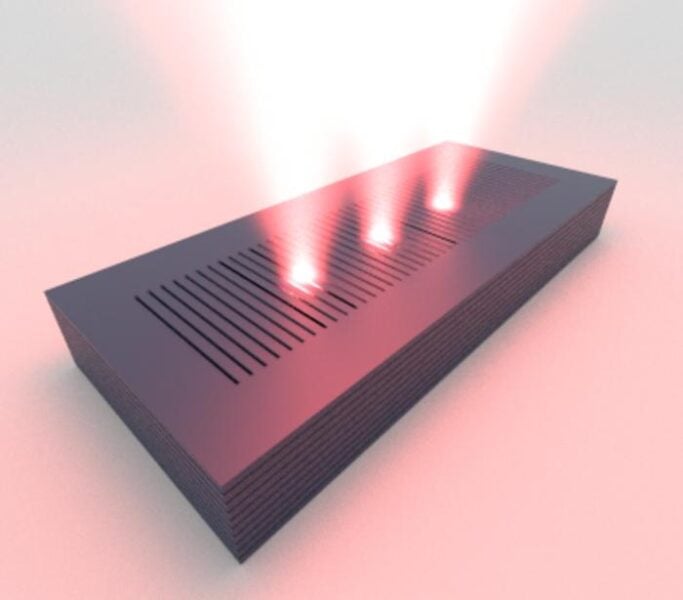Researchers from CNR Nanotec in Lecce and the Faculty of Physics at the University of Warsaw have developed a new method to create stable, long-lived quantum droplets of light using a novel type of semiconductor photonic gratings. These droplets, known as exciton-polaritons or polaritons, can interact and form macroscopic complexes, paving the way for advanced simulations of complex quantum systems.
Polaritons are formed when electronic excitations in a semiconductor interact strongly with photons trapped between two mirrors in an optical microresonator. Under the right conditions, these particles can condense into a macroscopic quantum fluid or a droplet of light. However, polariton condensates typically dissipate quickly and require continuous optical pumping, which can cause the condensate to become energetic and unstable.
To overcome this challenge, the researchers used a new generation of semiconductor photonic gratings that imbue polaritons with unique properties. First, the polaritons could condense into an ultralong lifetime state called a bound state in the continuum (BIC), which is mostly non-radiative due to symmetry-enforced protection from the outside continuum of photonic modes. Second, the polaritons gained a negative effective mass due to the grating’s dispersion relation, preventing them from easily escaping through normal decay channels.
These mechanisms allowed the researchers to optically pump multiple polariton droplets that could interact and hybridize into macroscopic complexes, forming artificial atoms. The BIC property provided polaritons with much longer lifetimes, while the negative mass property caused them to become optically trapped. The findings were supported by a BIC Dirac-polariton theory developed by collaborators from the University of Warsaw, University of Siegen, and Univ Lyon.
The ultimate advantage of this platform is that the artificial quantum complexes can be all-optically programmed while retaining very high lifetimes due to their protection from the continuum. This could lead to new opportunities in optically programmable large-scale quantum fluids with unprecedented coherence scales and stability for structured nonlinear lasing and polariton-based simulation of complex systems.
“There are still several interesting ways to explore in this artificial polaritonic Dirac system. As an example, the coupling mechanism between polariton droplets along and perpendicular to the grating direction is very different. Along the waveguide, polaritons are effectively negative mass particles strongly bound to their pump spot. Perpendicular to the waveguide they move as positive mass particles undergoing ballistic transport. The mixture of these two mechanisms opens a new window to look at emergent behaviours of synchrony and pattern formation in structured polariton quantum fluids” concludes Helgi Sigurðsson from the Faculty of Physics, University of Warsaw.
The research was supported by the National Science Center grant (2022/45/P/ST3/00467) co-funded by the European Union Framework Programme for Research and Innovation Horizon 2020 under the Marie Sklodowska-Curie grant agreement (No. 945339).
#QuantumDroplets
#PolaritonPhysics
#PhotonicGratings
#QuantumSimulations


